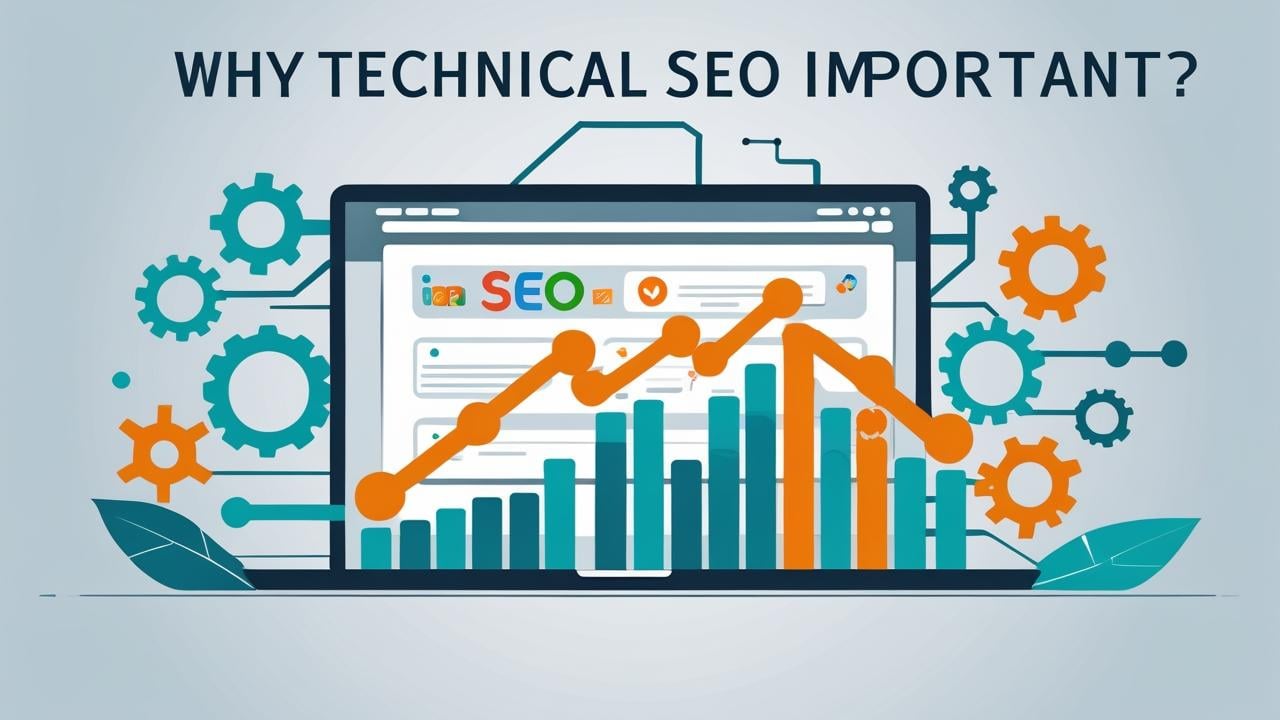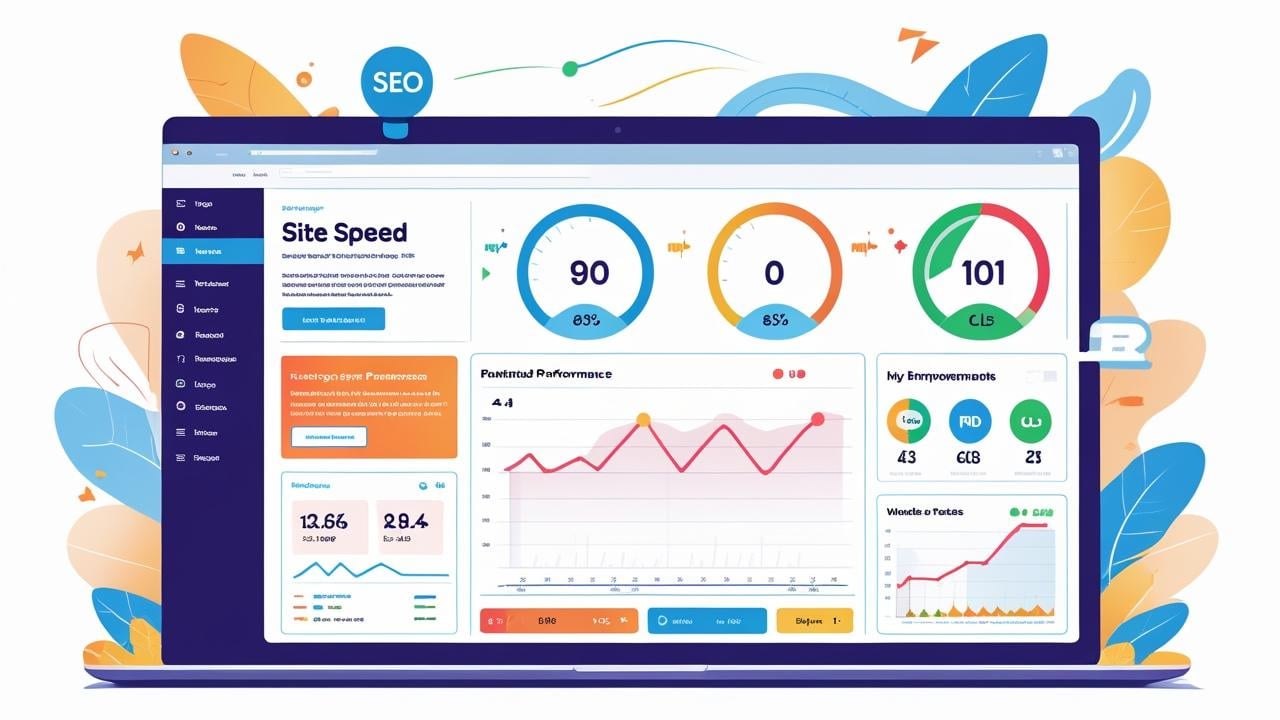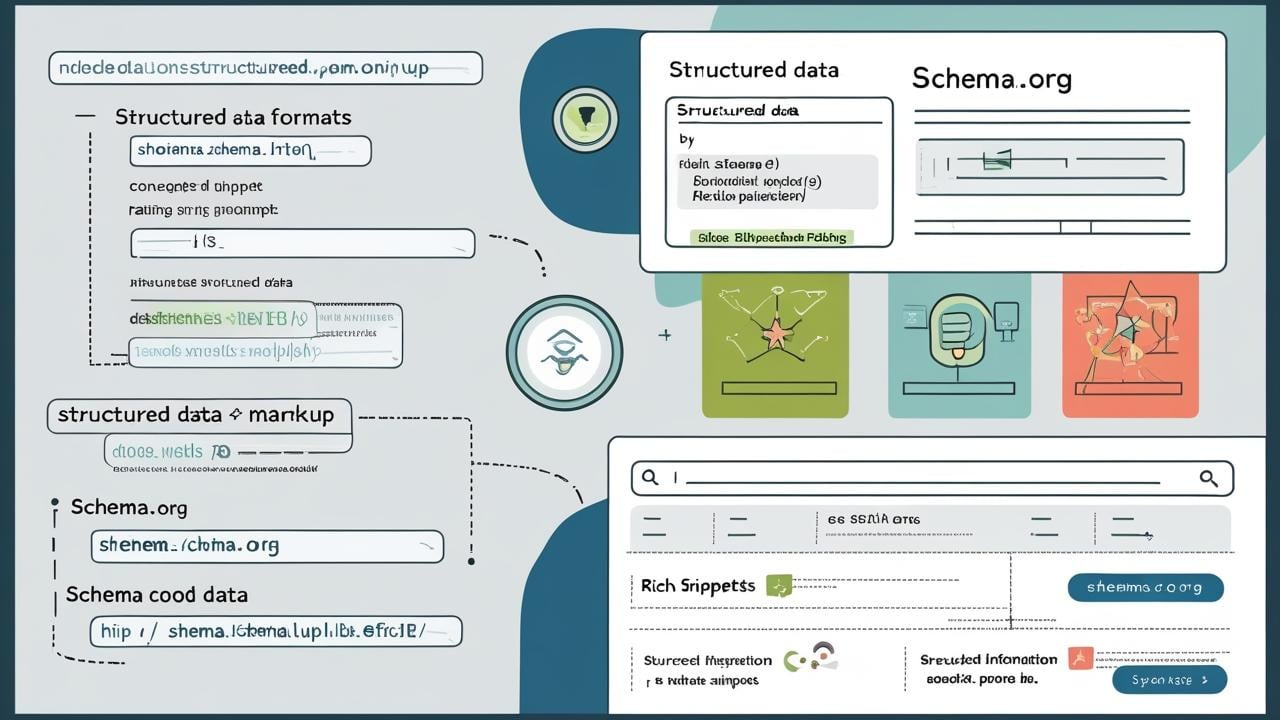In the ever-evolving world of digital marketing, search engine optimisation (SEO) remains a critical strategy for driving visibility, organic traffic, and long-term growth. Among its pillars on-page SEO, off-page SEO, and technical SEO, it’s the technical side that often gets overlooked, despite being the foundation upon which every other strategy depends.
Technical SEO refers to the backend optimisations that help search engines effectively crawl, render, and index your website. It’s not about content or backlinks, but about the infrastructure that allows your content to perform at its peak.
If your site has compelling content but isn’t technically sound, search engines may not understand or trust it. From crawlability and speed to mobile-friendliness and site architecture, every technical element directly influences your organic performance.
This guide explores what technical SEO is, why it’s essential for websites, and a detailed checklist of actions to future-proof your site and improve visibility.
What is Technical SEO?
Technical SEO encompasses all the backend improvements that ensure your website is accessible, understandable, and trustworthy for search engines. Unlike content-focused SEO efforts, this branch emphasizes performance, structure, and search engine compatibility.
In simple terms, technical SEO is about optimising how search engines crawl and index your site. It involves creating a clean codebase, using correct tags and protocols, managing redirects, structuring your site properly, and maintaining a secure environment.
This is different from on-page SEO, which optimises the visible content and keywords, or off-page SEO, which involves backlinks and external signals. Technical SEO is the bedrock—if it’s flawed, everything else crumbles.
Why Technical SEO is Important?

Search engines prioritize user experience, fast-loading pages, and mobile optimisation more than ever. Without technical SEO, your website risks remaining invisible, regardless of content quality or authority.
Here’s why technical SEO is indispensable in 2025:
-
Indexation efficiency: If Google can’t find your pages, they won’t rank.
-
Speed and Core Web Vitals: Slow sites face lower engagement and reduced visibility.
-
Security and trust: HTTPS is a standard, not a luxury.
-
Mobile-first indexing: Sites not optimised for mobile risk being penalized.
-
Structured data: Helps search engines better understand and rank content.
-
Scalability: A strong technical foundation supports long-term site growth.
Investing in technical SEO helps prevent costly errors, improves ranking signals, and boosts user engagement by delivering seamless experiences across devices.
Technical SEO Checklist
1. Robots.txt and XML Sitemaps
-
-
Allow Googlebot access to critical areas
-
Block admin and duplicate pages
-
Submit updated XML sitemaps to Google Search Console
-
2. Canonical Tags & Meta Robots
-
- Use canonical tags to consolidate duplicate content
- Apply
noindexon low-value or thin pages - Prevent indexing of search result pages and filters
3. HTTPS and HSTS
-
- Ensure all pages redirect to HTTPS
- Add HTTP Strict Transport Security (HSTS) headers
- Maintain SSL certificate renewals
4. Mobile Responsiveness
-
- Implement responsive design
- Avoid pop-ups or intrusive interstitials
- Optimise tap targets and viewport settings
5. Page Speed and Core Web Vitals
-
- Optimise images using next-gen formats
- Minify CSS, JS, HTML
- Implement lazy loading for media assets
- Reduce Time to First Byte (TTFB)
6. Internal Linking and Structure
-
- Maintain a flat hierarchy with logical paths
- Avoid orphan pages
- Use contextual links and descriptive anchor text
7. Structured Data
-
- Use schema.org markup for articles, products, FAQs, breadcrumbs
- Validate using Google’s Rich Results Testing Tool

Crawlability and Indexability
Crawlability is the process through which search engine bots discover your web pages. Indexability refers to the ability of those pages to be added to a search engine’s database. Without both, your pages won’t appear in search results.
Key tactics:
-
- Keep your
robots.txtfile clean and readable. - Use the
<meta name="robots" content="noindex">tag carefully. - Leverage internal links to ensure every page can be reached.
- Avoid infinite scroll and JavaScript obstacles that hide content.
- Keep your
Regularly test your site’s crawl and index status using Google Search Console’s Coverage and URL Inspection tools.
Site Architecture and URL Structure
A site’s architecture affects both usability and SEO. Flat, intuitive structures help both users and bots navigate content efficiently.
Best practices:
-
- Keep your most important content within 3 clicks of the homepage.
- Use short, keyword-rich URLs that are easy to read.
- Organize content using logical categories and subfolders.
- Avoid long, dynamic parameters like
?id=123.
Strong architecture prevents crawl issues, distributes authority efficiently, and improves UX—all leading to higher search visibility.
Redirects and Canonicalization
Redirects ensure link equity and user flow remain intact, especially during migrations. Canonicalization prevents duplicate content issues.
Tips:
-
- Use 301 redirects for permanent changes.
- Avoid redirect chains or loops.
- Set canonical URLs to indicate the preferred version of duplicate pages.
- Never rely on JavaScript redirects for SEO-critical paths.
Mismanagement here can cost rankings, so it’s critical to audit regularly.

Site Speed & Core Web Vitals
Site speed directly affects user satisfaction, bounce rates, and search visibility. Google’s Core Web Vitals are now a key performance signal.
Focus on:
-
- LCP (Largest Contentful Paint): Optimise above-the-fold content.
- FID (First Input Delay): Reduce JavaScript execution.
- CLS (Cumulative Layout Shift): Reserve space for images and ads.
- Use tools like Lighthouse, WebPageTest, and GTmetrix.
Fast-loading pages increase conversions and engagement—two major success factors.
Mobile-First SEO
With most users accessing the web via mobile, search engines now prioritize mobile versions of websites.
Essentials for mobile SEO:
-
- Use a responsive framework like Bootstrap or CSS Grid.
- Avoid Flash and heavy pop-ups.
- Prioritize thumb-friendly layouts.
- Test mobile performance regularly with Google’s Mobile-Friendly Test.
Mobile optimisation is no longer optional—it’s the baseline.
Website Security – HTTPS & HSTS
Web security builds trust with users and search engines alike.
To secure your site:
-
- Install and maintain an SSL certificate.
- Force HTTPS using server-level redirects.
- Enable HSTS to enforce HTTPS connections.
Secure websites get preference in search results and ensure user data safety.

Structured Data & Schema Markup
Structured data enhances your search listings with rich snippets like reviews, FAQs, and product info.
Common schema types:
-
- Article and Blog Posting
- Product, Review, Rating
- FAQ, Breadcrumb List, Organization
Implementation tips:
-
- Use JSON-LD format
- Validate with Rich Results Testing Tool
- Include structured data on key pages
Proper markup increases visibility and click-through rates (CTR).
Technical SEO Audit: Step-by-Step
Performing regular audits is critical to maintaining a technically sound website.
Step-by-Step Process:
-
- Crawl the site with Screaming Frog or Sitebulb
- Review indexation issues in Google Search Console
- Check Core Web Vitals using PageSpeed Insights
- Audit structured data using schema validators
- Fix 404 errors, redirect loops, and thin content
- Test mobile usability
Keep audit logs and repeat quarterly to stay ahead of issues.
Common Technical SEO Mistakes to Avoid
Avoiding these errors can prevent drops in traffic and rankings:
-
- Blocking essential pages in robots.txt
- Duplicate pages with no canonicals
- Missing or slow XML sitemaps
- Long redirect chains
- Mobile versions lacking critical content
- Improper use of schema
Regular audits and real-time monitoring can help you stay error-free.

Advanced Technical SEO Techniques
For larger or dynamic websites, advanced tactics become essential:
-
- Crawl budget optimisation: Prioritize indexing of high-value pages.
- Dynamic rendering: Serve pre-rendered HTML for JavaScript-heavy sites.
- Lazy loading: Improve load time by deferring off-screen content.
- Server log analysis: Track bot behavior and diagnose crawl inefficiencies.
- Edge SEO: Use CDNs and serverless tools to implement changes faster.
Scalable solutions like these help large websites retain performance and rankings.
Conclusion & Takeaways
Technical SEO is the silent engine that powers your website’s visibility, user experience, and long-term success. While content and backlinks often steal the spotlight, it’s your technical foundation that determines whether your site is discoverable, accessible, and trustworthy in the eyes of search engines.
In this guide, we explored everything from crawlability and indexability to page speed, mobile responsiveness, structured data, and common pitfalls to avoid. Each element plays a vital role in ensuring your website performs at its peak and delivers value to users.
To summarize:
-
- Without technical SEO, your best content may never be seen.
- A well-optimised site ensures search engines can understand and rank your pages.
- Performance, security, structure, and mobile optimisation are no longer optional—they’re expected.
- A regular audit and checklist approach keeps your site healthy and competitive.
Whether you’re managing a blog, eCommerce store, or enterprise site, strengthening your technical SEO is one of the smartest investments you can make.
💬 Frequently Asked Questions
What is technical SEO and why is it important?
Technical SEO refers to the backend optimisations of a website that help search engines crawl, index, and rank it effectively. It’s important because it ensures that your content is discoverable, your site loads fast, is mobile-friendly, and provides a secure, user-friendly experience—all of which contribute to higher search engine rankings.
What are the key elements of technical SEO?
The main elements of technical SEO include site speed optimization, mobile-friendliness, secure HTTPS protocols, crawlability, indexability, structured data, canonicalization, proper use of redirects, XML sitemaps, robots.txt files, and Core Web Vitals.
How do I perform a technical SEO audit?
A technical SEO audit involves crawling your website using tools like Screaming Frog, checking for indexation issues in Google Search Console, analyzing page speed, reviewing structured data, testing mobile usability, fixing broken links, and optimizing site architecture.
What tools are used in technical SEO?
Common technical SEO tools include Google Search Console, PageSpeed Insights, Screaming Frog SEO Spider, GTmetrix, Ahrefs, SEMrush, and Google’s Mobile-Friendly Test.
How often should I audit my website for technical SEO issues?
It’s recommended to audit your website at least quarterly, or monthly for larger or frequently updated sites. Regular audits help catch issues early and maintain optimal performance.
What is a technical SEO checklist?
A technical SEO checklist is a comprehensive list of backend optimizations to ensure your website meets current search engine requirements. It includes tasks like checking site speed, updating sitemaps, fixing broken links, optimizing for mobile, securing the site with HTTPS, and implementing schema markup.
Can technical SEO affect my search rankings?
Yes. A poorly optimized technical foundation can prevent pages from being indexed or reduce their visibility in search results. Improving technical SEO can enhance user experience, speed, and crawlability—leading to better rankings.
What are Core Web Vitals in technical SEO?
ore Web Vitals are performance metrics introduced by Google that measure loading speed (LCP), interactivity (FID), and layout stability (CLS). They directly influence search rankings and user experience.
What is the difference between technical SEO and on-page SEO?
Technical SEO focuses on the backend infrastructure (site speed, crawlability, mobile optimization), while on-page SEO deals with the content and elements visible to users, like keywords, headings, and meta tags.
Why is structured data important in technical SEO?
Structured data, or schema markup, helps search engines better understand your content, which can lead to rich results like featured snippets, ratings, and FAQs—improving visibility and click-through rates.
🚀 Need Help Optimising Your Site’s Technical SEO?
A well-structured website can dramatically increase your organic traffic and ROI—but it starts with the right technical foundation.
👉 Click here to speak with our technical SEO experts and let us help you audit, fix, and future-proof your website for lasting success.

